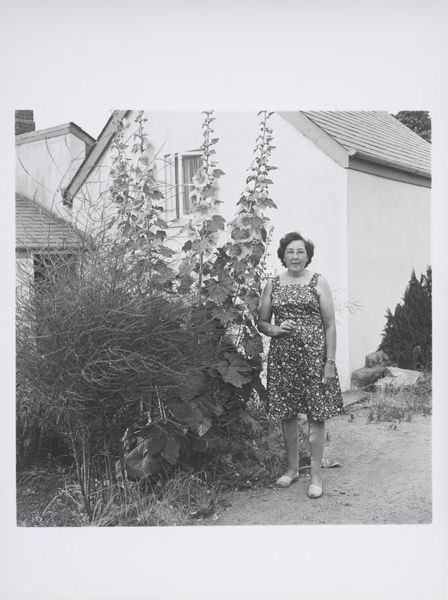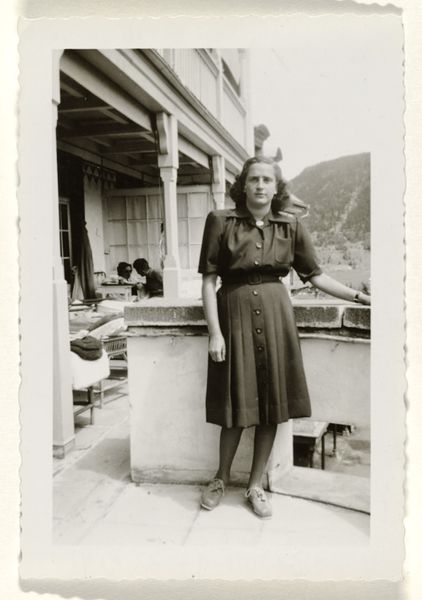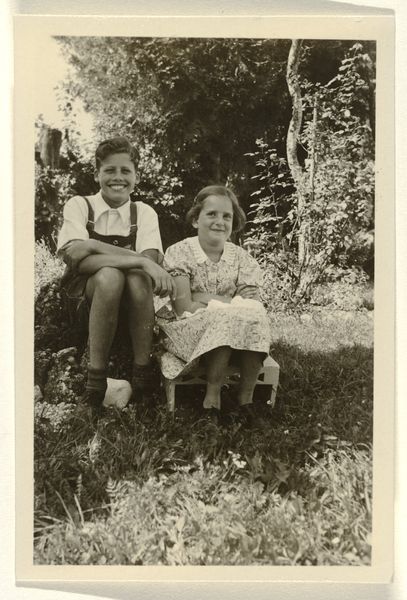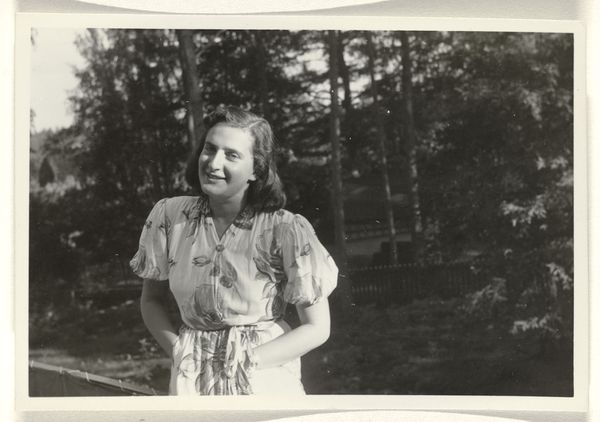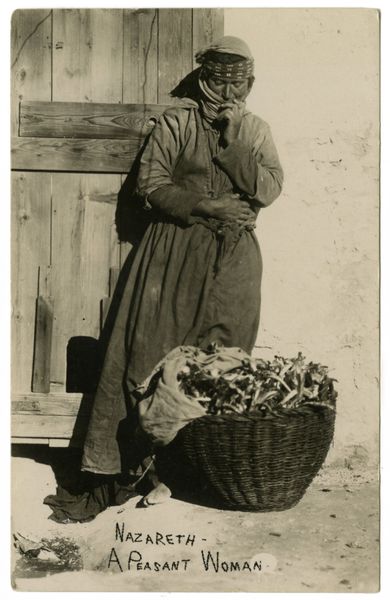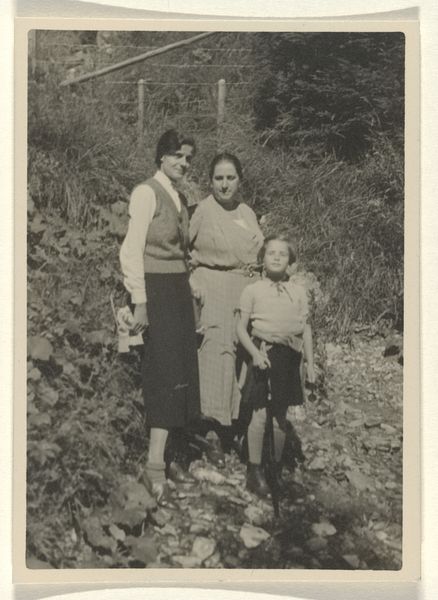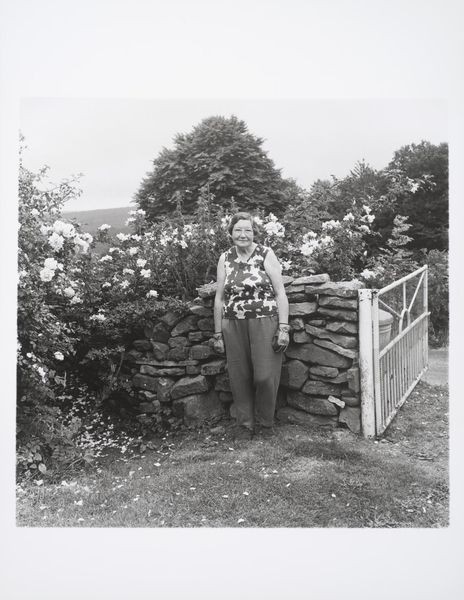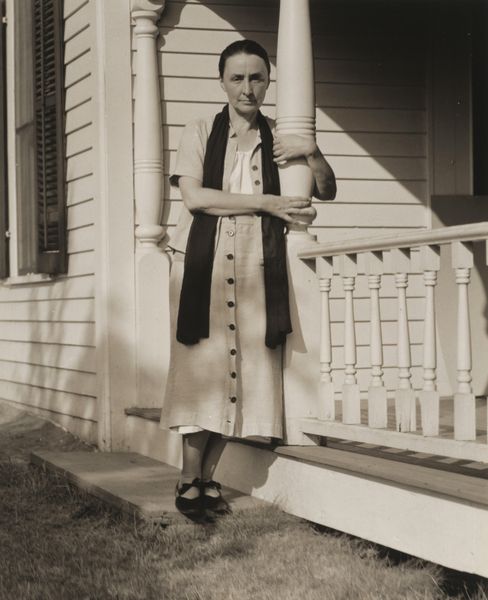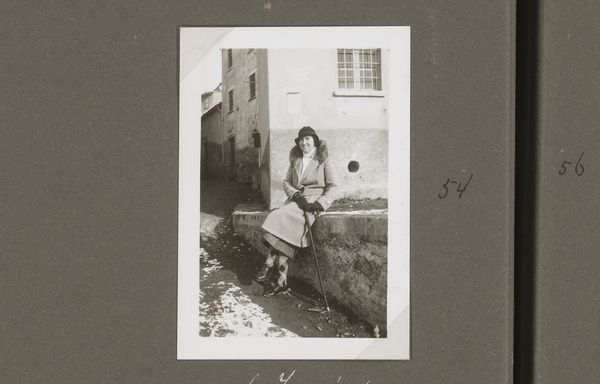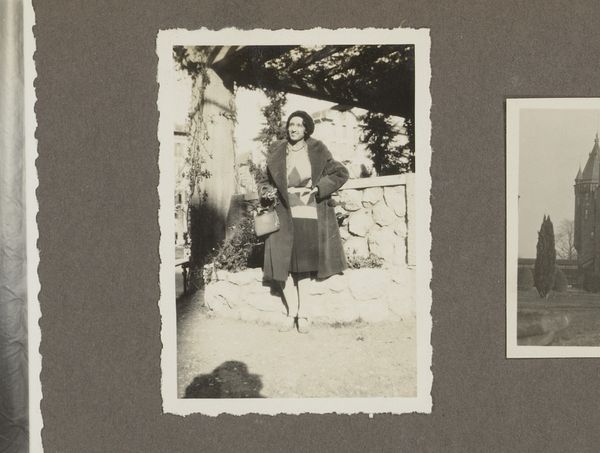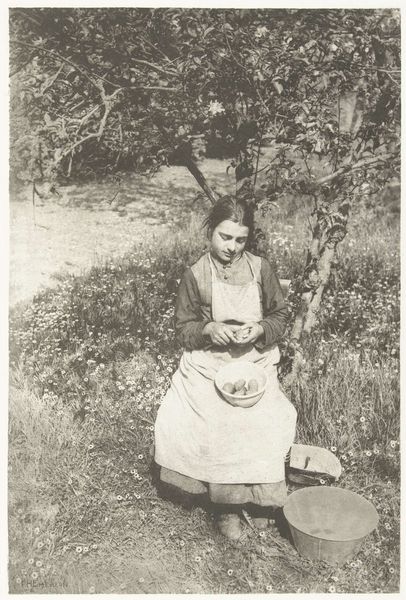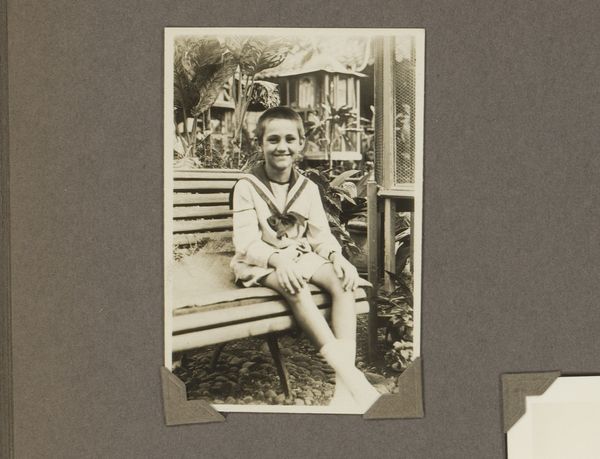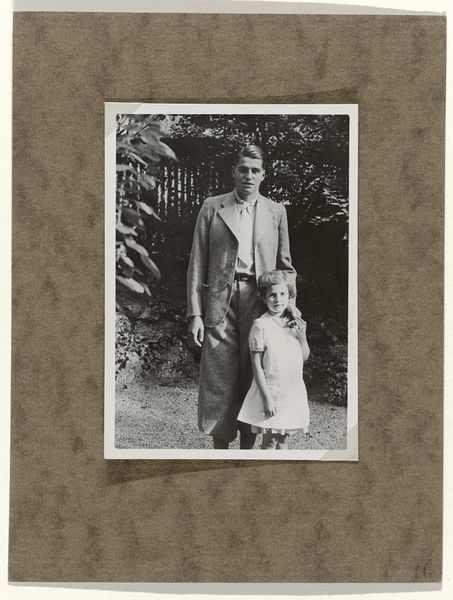
Isabel Wachenheimer in geblokt hemd, staand voor een gebouw met openslaande deuren en grof stenen muur, vliegveld van Lod in november 1952 1952
0:00
0:00
photography, gelatin-silver-print
#
portrait
#
landscape
#
photography
#
historical photography
#
gelatin-silver-print
#
monochrome photography
#
realism
#
monochrome
Dimensions: height 90 mm, width 70 mm
Copyright: Rijks Museum: Open Domain
Editor: Here we have a gelatin-silver print from 1952, its full title is "Isabel Wachenheimer in geblokt hemd, staand voor een gebouw met openslaande deuren en grof stenen muur, vliegveld van Lod in november 1952." It feels very candid and personal, like a moment frozen in time. What stands out to you? Curator: Well, beyond it being a personal photograph, consider the context: Israel in 1952 was a young nation, only four years after its founding. Lod Airport, now Ben Gurion, was its primary gateway to the world. What narratives are present by considering the setting of an airport during this formative period? How was the space of the airport presented, used, or imagined at that moment in time? Editor: I hadn't thought about that. It changes my view of it. What kind of statement might be being made? Curator: Think about the subject's clothing—the "geblokt hemd," or checkered shirt—in contrast with the rough stone and rudimentary building materials. How does that communicate something about the moment and maybe even the identity of the subject and of the new state? Is there something intentional being communicated? Does the photo reinforce existing ideas, or subvert them? Editor: So you're saying the contrast reflects maybe a tension between embracing modernity and dealing with the realities of nation-building? Curator: Precisely. Now, think about who is taking and preserving these images, and why. Photos like this gain historical weight because of their survival and circulation. Why did it endure, and who found meaning in this specific depiction? Editor: That's fascinating. I was so focused on the surface level—the subject and the style—that I didn't really consider the socio-political layers within the piece and the effect of museums and galleries to further communicate particular messages. Curator: Exactly. Every detail holds clues to the bigger story, from the architecture to clothing, it's about piecing them together in context and seeing how meaning can shift depending on those contexts. Editor: I see what you mean. Now I can view not just the artwork, but the context and its social relevance differently! Thank you!
Comments
No comments
Be the first to comment and join the conversation on the ultimate creative platform.
